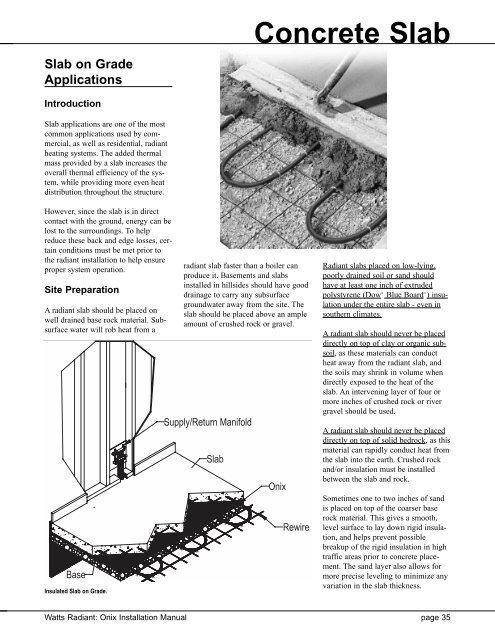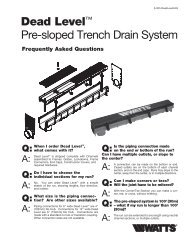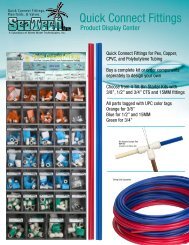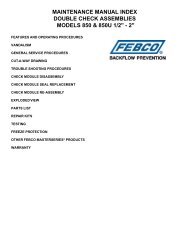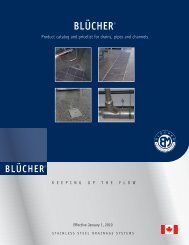Onix Installation Manual.qxd - Affordable Home Inspections
Onix Installation Manual.qxd - Affordable Home Inspections
Onix Installation Manual.qxd - Affordable Home Inspections
- No tags were found...
Create successful ePaper yourself
Turn your PDF publications into a flip-book with our unique Google optimized e-Paper software.
Slab on GradeApplicationsConcrete SlabIntroductionSlab applications are one of the mostcommon applications used by commercial,as well as residential, radiantheating systems. The added thermalmass provided by a slab increases theoverall thermal efficiency of the system,while providing more even heatdistribution throughout the structure.However, since the slab is in directcontact with the ground, energy can belost to the surroundings. To helpreduce these back and edge losses, certainconditions must be met prior tothe radiant installation to help ensureproper system operation.Site PreparationA radiant slab should be placed onwell drained base rock material. Subsurfacewater will rob heat from aBaseInsulated Slab on Grade.radiant slab faster than a boiler canproduce it. Basements and slabsinstalled in hillsides should have gooddrainage to carry any subsurfacegroundwater away from the site. Theslab should be placed above an ampleamount of crushed rock or gravel.Supply/Return ManifoldSlab<strong>Onix</strong>RewireRadiant slabs placed on low-lying,poorly drained soil or sand shouldhave at least one inch of extrudedpolystyrene (Dow ¤ Blue Board ¤ ) insulationunder the entire slab - even insouthern climates.A radiant slab should never be placeddirectly on top of clay or organic subsoil,as these materials can conductheat away from the radiant slab, andthe soils may shrink in volume whendirectly exposed to the heat of theslab. An intervening layer of four ormore inches of crushed rock or rivergravel should be used.A radiant slab should never be placeddirectly on top of solid bedrock, as thismaterial can rapidly conduct heat fromthe slab into the earth. Crushed rockand/or insulation must be installedbetween the slab and rock.Sometimes one to two inches of sandis placed on top of the coarser baserock material. This gives a smooth,level surface to lay down rigid insulation,and helps prevent possiblebreakup of the rigid insulation in hightraffic areas prior to concrete placement.The sand layer also allows formore precise leveling to minimize anyvariation in the slab thickness.Watts Radiant: <strong>Onix</strong> <strong>Installation</strong> <strong>Manual</strong> page 35


